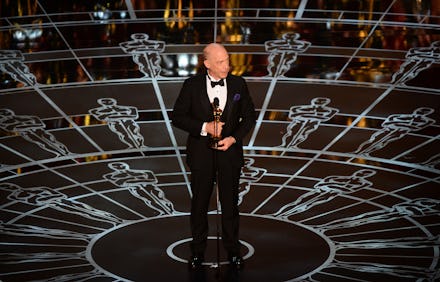Oscars Rules for Acceptance Speeches Are Changing — Here's Why That's a Good Thing

If you've watched the Oscars, you've seen it before: the hurried speech, the actor fidgeting through a crumpled up piece of paper, ready to thank their loved ones, agent, producers and, of course, their director. It's difficult to go through the motions in what is supposed to be a 45-second speech, being able to thank everyone in time and include an authentic anecdote before being cut off by the swooning strings and impending commercial break.
Thankfully, the Academy of Motion Picture Arts and Sciences has caught on to this ongoing, and boring, trope. Now, the Academy Awards will ask its nominees to provide a list of people to thank, and the names will be used in a scroll at the bottom of the screen.
Read more:
The best way for actors to capitalize on this is to use their allotted time in new, creative ways, knowing that they have the full time to do so without the burden of thank-yous. That doesn't necessarily mean they all have to be funny anecdotes. Rather, it also has the potential to add speeches that invoke societal issues such as — in the case of Patricia Arquette's speech from the 2015 Academy Awards — a plea for wage equality in film and equal rights for women.
At the very least, the new implementation can provide more entertaining and memorable moments at the dais. With that necessary adjustment out of the way, though, the academy must now focus on its most glaring issue: A lack of diversity in its nominations. While the academy has said that it will commit to doubling the number of women and diverse members into its ranks by 2020, it only looks good as a concept — we still have to wait for the execution.